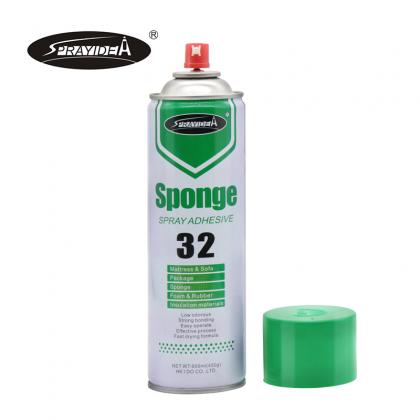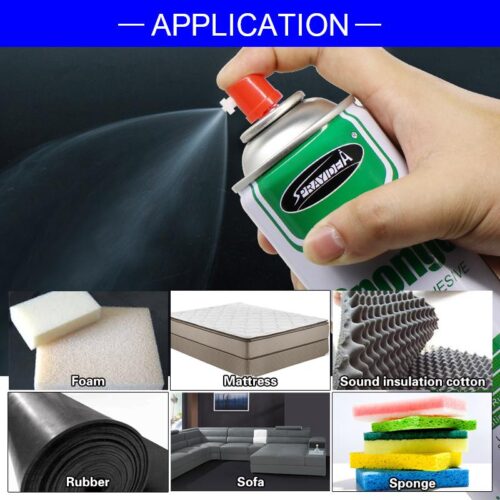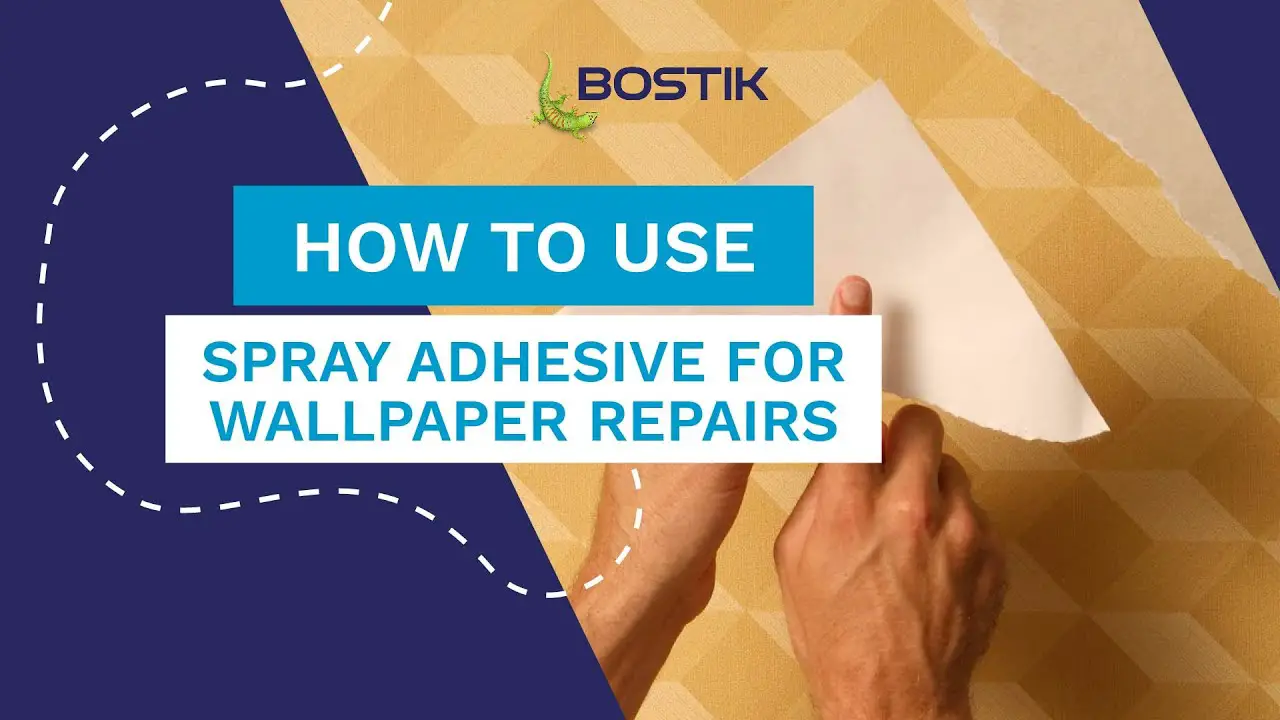Yes, you can use spray adhesive for wallpaper, and it can be an effective method to ensure the wallpaper sticks properly to the wall. Spray adhesive provides a quick and easy way to apply adhesive to the wallpaper, helping to create a smooth and even application.
Applying wallpaper can be an exciting way to refresh a room, offering a wide range of colors, patterns, and textures to suit any decor style.
Using spray adhesive can be a convenient option for ensuring the wallpaper adheres firmly to the wall, especially in hard-to-reach areas or for smaller projects.
Understanding the proper use of spray adhesive for wallpaper can help to achieve professional-looking results, making the process of wall decoration smooth and successful.
Contents
Understanding Spray Adhesive
Spray adhesive is a versatile and convenient option for various DIY projects, including wallpaper installation. Understanding the composition and applications of spray adhesive is essential for ensuring successful and long-lasting results.
In this section, we will delve into the key aspects of spray adhesive, shedding light on its composition and various applications to help you make an informed decision when considering it for wallpaper installation.
Composition Of Spray Adhesive
Spray adhesives typically consist of a combination of chemicals, including solvents, resins, and propellants. These components work together to create a tacky and durable adhesive that can effectively bond materials such as wallpaper to various surfaces.
Applications Of Spray Adhesive
Spray adhesive offers a wide range of applications, making it suitable for numerous DIY and professional projects. When it comes to wallpaper installation, using spray adhesive can provide several advantages, such as seamless application, secure adhesion, and the ability to reposition the wallpaper if needed.

Considerations For Wallpaper
When considering using spray adhesive for wallpaper, it’s important to take into account various factors to ensure a successful application and long-lasting results. Here are some key considerations when it comes to using spray adhesive for wallpaper:
Types Of Wallpaper:
- Vinyl Wallpaper: Works well with spray adhesive due to its durability.
- Non-Woven Wallpaper: Ideal for spray adhesive as it doesn’t expand when wet.
- Pre-Pasted Wallpaper: Can be used with spray adhesive for additional adhesion.
- Grasscloth Wallpaper: Not recommended with spray adhesive due to the delicate nature of the material.
Surface Compatibility:
- Smooth Surfaces: Spray adhesive is suitable for smooth surfaces like drywall or wood.
- Textured Surfaces: Avoid using spray adhesive on heavily textured walls as it may not adhere properly.
- Moisture-Prone Areas: Consider a moisture-resistant adhesive if applying wallpaper in bathrooms or kitchens.
While spray adhesive can be a convenient option for wallpaper installation, it’s crucial to match the type of wallpaper and surface compatibility for the best results. Always follow manufacturer instructions and test a small area before applying it to the entire wall.
Using Spray Adhesive For Wallpaper
If you’re considering using spray adhesive for wallpaper, it’s essential to understand the proper preparation steps and application techniques.
Spray adhesive can be a convenient and efficient option for hanging wallpaper, but it requires precise execution to achieve the desired results.
In this article, we will guide you through the necessary steps and techniques for using spray adhesive effectively.
Preparation Steps
Before you begin using spray adhesive for wallpaper, it’s crucial to prepare the surface properly to ensure a smooth and long-lasting application.
Follow these preparation steps to ensure optimal results:
- Clean the surface: Start by cleaning the wall or surface where you plan to apply the wallpaper. Remove any dirt, dust, or grease that may hinder the adhesive’s effectiveness. This will provide a clean canvas for the wallpaper to adhere to.
- Smooth out imperfections: Inspect the surface for any imperfections such as holes, bumps, or uneven patches. Fill in gaps and sand down rough areas to ensure a flat and even surface. This step will help the wallpaper adhere evenly and prevent it from peeling or bubbling.
- Measure and cut: Measure your wallpaper accurately, accounting for any pattern repeats or additional length needed. Cut the wallpaper into manageable strips, making sure they align correctly when placed side by side. This will save you time and effort during the application process.
- Prepare the adhesive: Read the instructions provided with your spray adhesive product and mix or shake it as directed. Some adhesive products may require dilution with water, while others are ready to use. Follow the manufacturer’s guidelines carefully to achieve the optimum adhesive consistency.
- Protect surrounding areas: Take precautions to protect nearby furniture, floors, and fixtures from overspray. Cover them with drop cloths or plastic sheets to avoid any accidental damage from the adhesive. This step will help you maintain a clean and organized work area.
Application Techniques
Once you’ve completed the preparation steps, you’re ready to apply the spray adhesive to hang your wallpaper.
Consider these application techniques for a successful installation:
- Work in sections: Divide the wall into manageable sections based on the length of your wallpaper strips. This approach will prevent the adhesive from drying too quickly before you can attach the wallpaper.
- Spray the adhesive: Hold the spray adhesive can approximately 8-12 inches away from the wall. Apply a thin, even layer of adhesive on the section you’re working on. Avoid overspraying or saturating the surface, as it may cause the wallpaper to slide or wrinkle.
- Apply the wallpaper: Carefully align the edge of the wallpaper strip with the corresponding section on the wall. Press firmly against the wall and smooth out any wrinkles or air bubbles using a wallpaper smoothing tool or a clean, damp cloth. Continue this process for each section until the entire wall is covered.
- Trim excess wallpaper: After applying all the wallpaper sections, use a sharp utility knife or wallpaper trimmer to cut off any excess material along the edges and corners. Take your time and ensure precise cuts for a neat and professional-looking finish.
- Allow proper drying time: Allow the wallpaper adhesive to dry according to the manufacturer’s instructions. This step is crucial for the adhesive to bond effectively and ensure the wallpaper remains securely in place.
By following these preparation steps and application techniques, you can confidently use spray adhesive for wallpaper installation.
Remember to take your time, work carefully, and refer to the product instructions for specific guidance.
Whether you’re tackling a small accent wall or an entire room, spray adhesive can be a valuable tool in achieving a flawless and durable wallpaper finish.
Advantages Of Using Spray Adhesive
Spray adhesive offers convenience and mess-free application for wallpaper installation. It provides a secure bond and doesn’t leave residue, making it ideal for DIY projects. Saving time and effort, spray adhesive ensures a smooth and flawless wallpaper finish.
Using spray adhesive for wallpaper installation comes with various advantages that make it a popular choice among DIY enthusiasts and professionals alike.
In this section, we will explore the key advantages of using spray adhesive, including ease of application and improved adhesion.
Ease Of Application
The first advantage of using spray adhesive for wallpaper is its ease of application. Unlike traditional methods that involve messy paste application and soaking time, spray adhesive simplifies the process.
With just a few sprays, you can easily cover the entire surface, evenly applying the adhesive without any drips or clumps. Spray adhesive also offers precise control over where the adhesive is applied.
Its lightweight and portable design allow you to reach even the trickiest corners and edges, ensuring a seamless installation. Whether you are a seasoned installer or a DIY enthusiast, the ease of application provided by spray adhesive makes it a time-saving and hassle-free option.
Improved Adhesion
Another advantage of using spray adhesive for wallpaper is the improved adhesion it offers. The specialized formula of spray adhesive ensures strong bonding between the wallpaper and the surface, resulting in a long-lasting and secure installation.
This is particularly beneficial for areas with high humidity or moisture, as the adhesive creates a barrier that helps prevent peeling or detachment. Spray adhesive also provides excellent adhesion on various types of surfaces, including plaster, drywall, wood, and even non-porous materials like metal or glass.
The adhesive’s ability to bond effectively with different surfaces makes it a versatile choice for a wide range of wallpaper projects. In addition to improved adhesion, spray adhesive also helps eliminate the risk of bubbling or wrinkling during wallpaper installation.
Its even distribution and quick-drying properties ensure a smooth and seamless finish, resulting in a visually appealing wall. To summarize, the advantages of using spray adhesive for wallpaper include ease of application and improved adhesion.
With its user-friendly nature and reliable performance, spray adhesive offers a convenient and effective solution for achieving professional-quality results in your wallpaper installation projects.
Potential Challenges
When using spray adhesive for wallpaper, you may encounter several potential challenges to be aware of. Taking precautions and knowing how to tackle these issues can help you achieve a successful wallpaper application.
Overapplication Issues
- Applying too much spray adhesive may lead to excessive bonding and wrinkles in the wallpaper.
- Ensure to apply the adhesive evenly and in a moderate amount to avoid these issues.
Residue Removal
- Residue removal can be a tricky task after wallpaper removal.
- Use a mild detergent solution and gentle scrubbing to remove any leftover adhesive.

Safety Precautions
Before using spray adhesive for wallpaper, it’s crucial to understand the safety precautions to protect yourself and your environment.
Proper ventilation requirements, as well as the use of protective gear, are essential for a safe and successful application process.
Ventilation Requirements
Ensure adequate ventilation when using spray adhesive for wallpaper. Open windows and doors to allow fresh air to circulate, preventing the buildup of fumes in the room.
If possible, use a fan to further improve airflow and reduce the concentration of airborne particles.
Protective Gear
Wear protective gear such as gloves, safety goggles, and a mask when applying spray adhesive for wallpaper.
This will prevent direct contact with the adhesive and reduce the risk of inhaling harmful fumes or particles that may be released during the application process.
Frequently Asked Questions On Can I Use Spray Adhesive For Wallpaper
What Can I Use Instead Of Wallpaper Paste?
You can use alternatives like wallpaper adhesive, flour and water paste, or cornstarch paste instead of wallpaper paste. These options work well and are easily accessible for your wallpapering needs.
Can I Use Spray Adhesive On Walls?
Yes, you can use spray adhesive on walls. It provides a quick and easy way to attach items like posters, artwork, or fabric
Just ensure the wall surface is clean and dry before applying the adhesive. Use caution and follow the instructions on the adhesive can for best results.
What Is The Best Adhesive For Wallpaper?
The best adhesive for wallpaper is a clear, strippable wallpaper paste. It is easy to apply and creates a strong bond for long-lasting results. Make sure to follow the manufacturer’s instructions for the best application.
Does Spray Adhesive Work On Paper?
Yes, spray adhesive works well on paper, providing a firm and durable bond for various crafting and art projects. It’s essential to use a light and even application to prevent any excess residue or wrinkling.
Conclusion
Using spray adhesive for wallpaper is a convenient and efficient option. It ensures a smooth application and long-lasting results.
Remember to follow the manufacturer’s instructions for best outcomes. Enjoy transforming your space with ease using this handy adhesive solution. Boost your decor with confidence!

